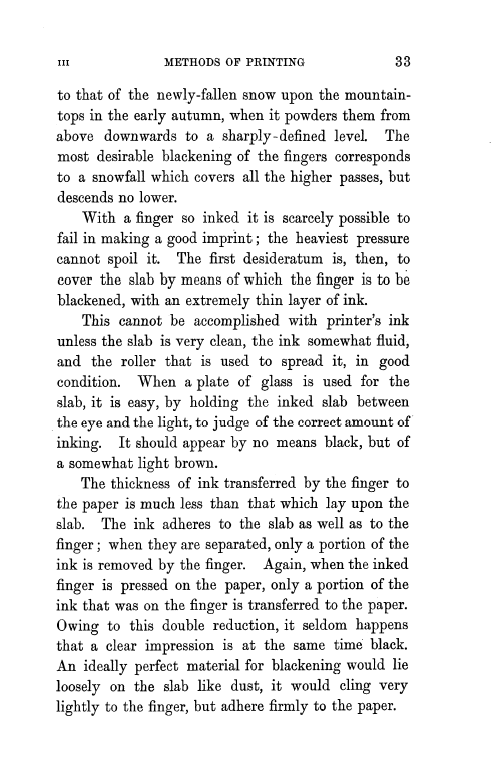| ||||||

OCR Rendition - approximate
III METHODS OF PRINTING 33 to that of the newly-fallen snow upon the mountaintops in the early autumn, when it powders them from above downwards to a sharply-defined level. The most desirable blackening of the fingers corresponds to a snowfall which covers all the higher passes, but descends no lower. With a finger so inked it is scarcely possible to fail in making a good imprint ; the heaviest pressure cannot spoil it. The first desideratum is, then, to cover the slab by means of which the finger is to be blackened, with an extremely thin layer of ink. This cannot be accomplished with printer's ink unless the slab is very clean, the ink somewhat fluid, and the roller that is used to spread it, in good condition. When a plate of glass is used for the slab, it is easy, by holding the inked slab between the eye and the light, to judge of the correct amount of inking. It should appear by no means black, but of a somewhat light brown. The thickness of ink transferred by the finger to the paper is much less than that which lay upon the slab. The ink adheres to the slab as well as to the finger; when they are separated, only a portion of the ink is removed by the finger. Again, when the inked finger is pressed on the paper, only a portion of the ink that was on the finger is transferred to the paper. Owing to this double reduction, it seldom happens that a clear impression is at the same time black. An ideally perfect material for blackening would lie loosely on the slab like dust, it would cling very lightly to the finger, but adhere firmly to the paper.
|